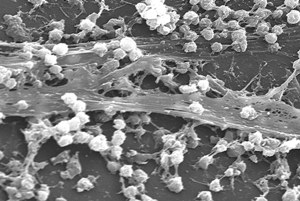Latest News
Recent News
New - The White Paper, a Two Minute Briefing
The White Paper's expert knowledge from university findings, the President of the Trichological Society, and us here at ABurnet condensed into an easy to read 2 minute brief.

What is it:
Target Zero Hair Complaints White Paper
Why was it written:
Research conducted to provide information on eliminating hair contamination before it becomes an issue, intended to provide:
- Scientific facts on hair shedding
- University research findings and ranking products based on hair containment
- The importance of clear, visual training tools and online auditing of staff compliance
Who conducted the research:
The White Paper is written based on:
- Extensive research by the University of Bolton, UK
- Expert knowledge from trichology expert Professor Barry Stevens FTTS, President of the Trichological Society 2014-2016
- Discussion with food industry technical, quality and hygiene personnel by ABurnet

Summary of findings:
1) Why is hair a contaminate in the food we all eat:
- The average human sheds 40-130 hairs from the scalp per day at a constant rate. In an 8 hour shift this equates with 1,300 to 4,300 hairs per 100 people. (Page 9 of the White Paper)
- Modern hair styles and care practices involving heat and chemicals that cause hair shafts to blister and sever increasing the probability of contamination, together with the shedding of beard, nasal and eyebrow hair. (Page 8)
- Short hair is twice as likely to protrude head coverings as longer hair and being less visible presents a much greater threat to food safety. Not only this, but abrasion of hair against standard head coverings forces hair through the fabric. (Pages 16,17 and 28)

2) The effect of pathogens and hair:
- Hair cannot be eliminated as disease carriers, however hand contact with the scalp during food production is probably more likely to act as a carrier. Therefore a complete head covering is recommended. (Pages 11, 23-24)

3) How to contain shed and severed hair:
- Extensive university research has proven that hair must be held flat with as many contact points along the shaft as possible. Wearers should be kept comfortable to reduce fidgeting, which both disturbs elastication and pushes hair through standard fabrics found particularly in mob caps. (Page 15)
- Performance head coverings designed for fit for purpose can be more cost effective than standard products. (Page 27)
4) The training recommended:
- Training in best practice and correct wear guidance is essential. Training should be visual, rotated and relevant to audit findings. Complimentary posters and videos are available online to assist with training. (Page 30)
- Compliance to best practice can be measured unobtrusively and efficiently using mobile devices and online tools to pin point corrective actions. Online graphics report best practice as a KPI for compliance evidence for customers. (Page 31)

To register to download the FULL White Paper, click on the link below for more expert knowledge and university research findings, as well as guidance on selecting appropriate head coverings and best practices for your organisation.





